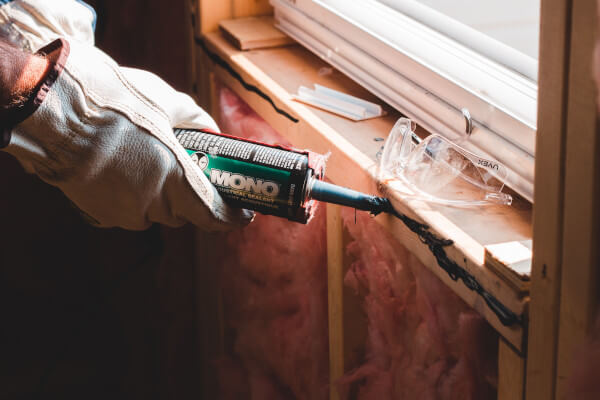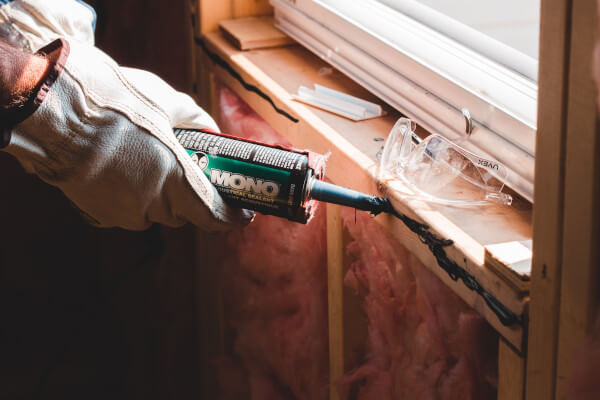How to Frame Out Basement Walls

>

Transform your basement into a more multifunctional space by adding walls.
Whether you’d like to partition your basement into more functional areas or you’re just tired of looking at those concrete walls, framing is the first step to putting up drywall and creating a more attractive, comfortable, and useful space. The trick is in making sure you build and install frames that are plumb and strong. Here’s how to go about it:
Check Basement Walls for Moisture
Start by checking the basement walls for excessive moisture. Use duct tape to secure a 2-foot-square piece of polyethylene sheeting to the wall. Wait at least three weeks to see if condensation appears behind the plastic or on its outer surface. If the plastic is dry, you’re good to go.If the basement walls are made of poured concrete, check for rust spots at the metal ties. If you see any, use a hammer and center punch to drive the metal tie a ¼ inch into the wall.Mist the metal-tie hole with water and use a margin trowel to apply hydraulic cement to plug each hole. Allow the cement to dry.
Insulate the Foundation Wall
Apply beads of foam-board adhesive to the back of a 2-inch-thick polystyrene panel. Press the foam board to the foundation wall and hold it there for a minute to let dry. Repeat with more foam boards until the foundation wall is entirely covered.
ttach a Wooden Grid to the Foundation Wall
Use a chalk reel to snap five horizontal layout lines onto the foam board. Position the lines 3 inches from the wall at the top and bottom, at the center point of the wall, and in between the 3-inch lines and centerline.Using a hammer drill and 3/16-inch masonry bit, put up horizontal 1×3 spruce boards by drilling 5-inch-deep pilot holes through the wood, foam, and concrete. Drill a hole every 16 to 20 inches, then use a hammer to drive 4-inch-long spring spikes through the pilot holes and into the wall.Attach vertical 1x3s, spaced 16 inches on center, to the horizontal 1x3s using a drill and 1 5/8-inch drywall screws.
Mark out Interior Wall Locations
If you’re partitioning your basement, determine where you want the other walls to stand.Using a floor-to-ceiling level (or two levels that add up to the length), transfer the position of the overhead beam down to the basement floor. Make a plumb mark onto the floor at each end of the beam. If there are lally columns beneath the beam, draw plumb marks onto the floor between the columns. Snap a chalk line across the basement floor from one plumb mark to the next.Use a power miter saw to cut to length a pressure-treated 2×4 bottom plate and 2×4 spruce top plate.
Mark the Wall Stud Locations
Set the top and bottom plates on edge and use a layout square to mark the locations of the wall studs; space the studs 16 inches on center.Lay the top and bottom plates flat on the floor and measure up to the underside of the beam to determine the height of the wall studs.Measure the wall-stud height in three or four spots, and cut the studs to the shortest dimension using a portable circular saw.
ssemble the Wall Frame
Assemble the wall frame on the floor by placing the studs between the top and bottom plates. Align each stud with the 16-inch on-center marks made earlier. Secure the studs by nailing through the top and bottom plates and into the ends of the studs.Stand up the wall frame and slide it beneath the beam. If necessary, use a hammer to tap the top plate flush with the face of the beam.Check to make sure the bottom plate is on the chalk line. Use the level to confirm that the wall is plumb, then nail up through the top plate and into the beam. Secure the bottom plate to the basement floor using a powder-actuated nail gun; shoot one nail between each pair of studs.Repeat the previous steps to frame, install, and secure the next wall. Be sure to maintain the 16-inch on-center stud spacing, and check the wall frame to make sure it’s plumb before nailing it to the beam.
